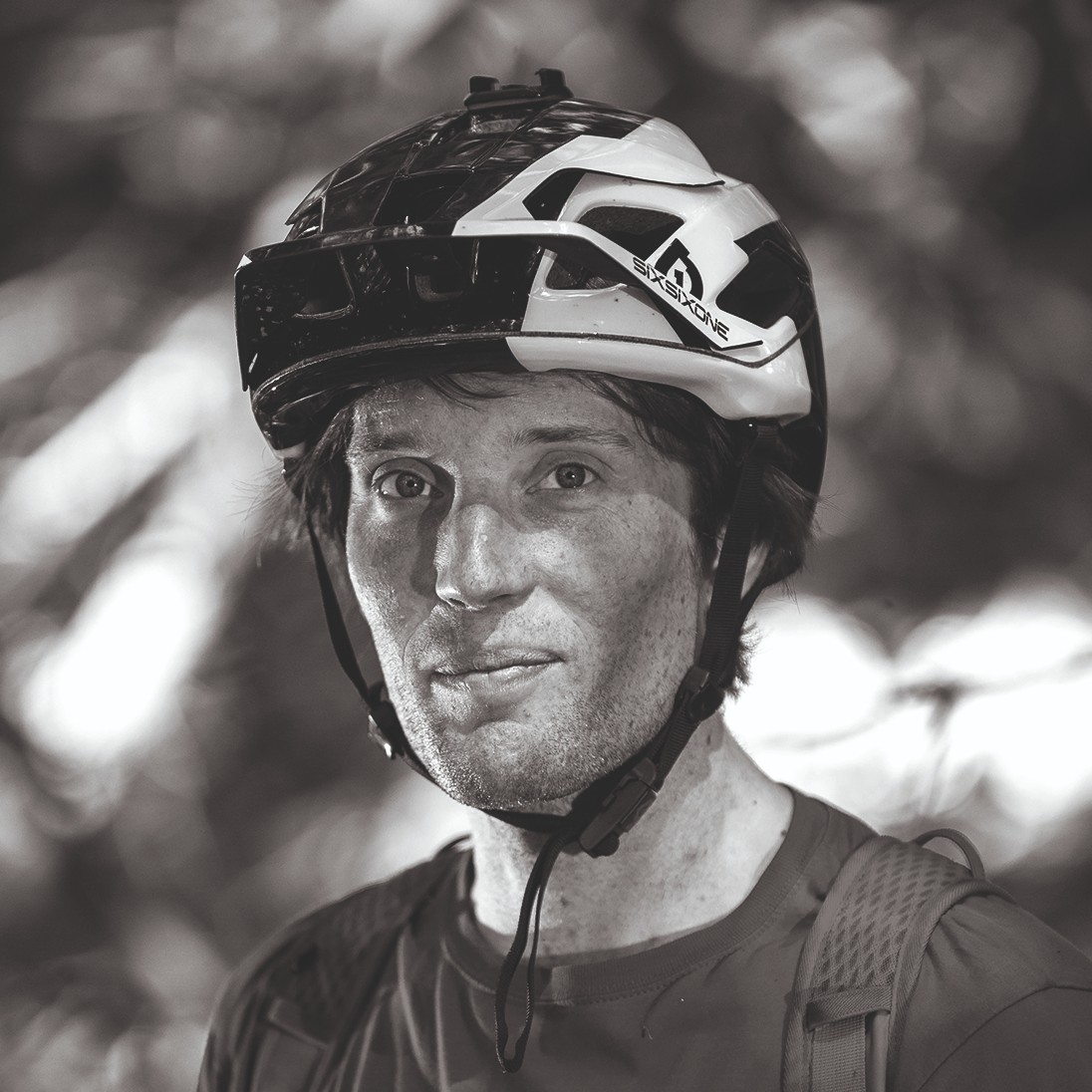EXO, TCS Tough, Apex, Super Ground, Grid Trail – navigating the world of mountain bike tyre carcasses can be a minefield of acronyms and brand-specific designs, but understanding what's at the heart of a tyre can make a significant difference to your ride.
In fact, choosing the best mountain bike tyres for your bike, style and terrain can make or break your ride. You'll often hear us say tyres are one of the most important upgrades you can make to your mountain bike.
While there's a lot to consider when eyeing up a fresh set of boots for a mountain bike, including compound, width and tread pattern, the carcass – also called the casing – is at the core of any bicycle tyre.
Selecting the right tyre for your needs can seem like a confusing web of jargon and brand bluster – and, truth be told, even the most experienced riders can still become lost in the naming conventions and technical specifications of any range of tyres.
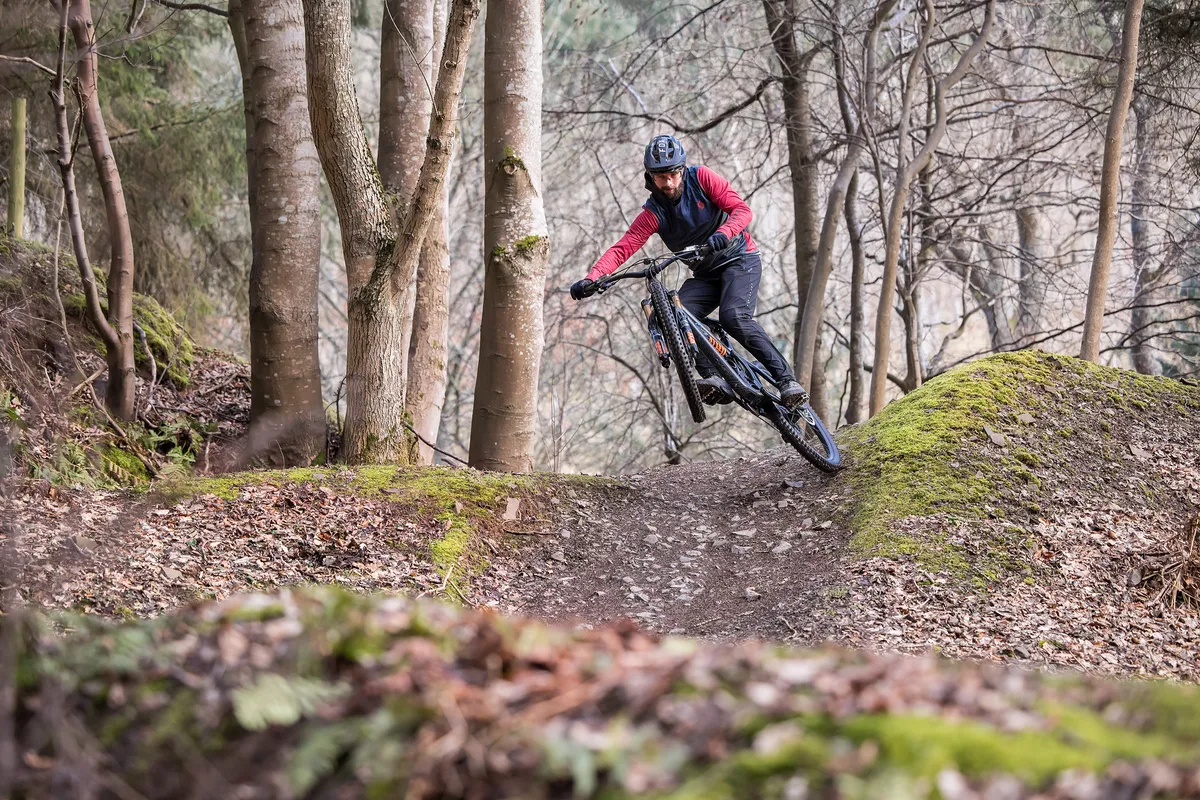
But fear not, BikeRadar is here to help.
While every brand will have its own jargon, the same construction principles apply. Get to grips with the way tyre carcasses are constructed – and what that means for your ride – and you’ll soon understand how to choose the best tyres for your riding.
There's a lot to cover here, so use the links below to skip to the section you need, or read on for every detail.
- Dissecting a mountain bike tyre
- Why does carcass construction matter?
- What types of tyre carcass are there?
- What carcass type do you need for your riding style?
- What else is there to consider?
Dissecting a mountain bike tyre

Let's start with an overview of how a typical mountain bike tyre is constructed, as well as the common terminology.
A mountain bike tyre is made up of many layers, but most tyres from the majority of manufacturers are designed in a similar way. The above image from Maxxis shows a regular mountain bike tyre's construction with its composite parts:
- Bead: A wire or rubber section that hooks onto the rim, keeping the tyre attached to the rim and creating an air-tight seal.
- Carcass (often referred to as the 'casing'): This part is what this article is all about. A casing can be thick or thin with a low or high TPI (we'll come on to this). The casing can wrap around itself once or multiple times, and wraps around the tyre's bead.
- Tread: Defining the type of terrain or riding style the tyre is most suited to, the tread pattern of different tyres can vary greatly, but its form isn't generally influenced by the casing.
- Puncture protection: A rubberised insert used within the tyre's construction to provide protection against tears or pinch flats. Increased puncture protection adds weight.
- Sidewall: The rubberised exterior of the tyre that gives it shape. The sidewall is usually where some of the puncture protection portion is located (for example Maxxis' EXO or DoubleDown inserts).
Why does carcass type matter?
A tyre's carcass can have a significant influence on how your bike rides, according to Aaron Chamberlain from Maxxis.
A tyre with a thicker casing creates a "more damped ride, which is typically desirable… [when] you’re smashing into rocks and roots at high speeds and subjecting the tyres to high cornering forces," he says.
Heavy-duty models might be great for stability in turns and for damping vibrations and bumps, and can often be run at lower pressures, but they’ll weigh more and create more rolling resistance (drag).
On the other hand, a thin, lightweight carcass can improve acceleration, deform around smaller, sharper bumps more readily and roll fast – but it might be more prone to punctures, or tear more easily, and sometimes require higher pressures.

According to Schwalbe's Tim Ward, lighter, thinner carcasses can also "reduce trail buzz and, in turn, rider fatigue, allowing the rider to put all their energy into [riding]."
Tyre carcasses that sit between these two extremes are designed to balance the damping and stability of weighty tyres with the compliance and deformation of lighter ones.
This, according to Ward, "enhances the rolling characteristics and trail feedback" while offering "increased lateral support and stability in hard cornering."
Although tyre carcasses aren't a silver-bullet solution for improving or changing the way your bike rides, they can have a significant effect, and choosing the right tyre for your needs is crucial.
With that in mind, let's get stuck into the different types of mountain bike tyre casing construction.
What types of mountain bike tyre carcass are there?
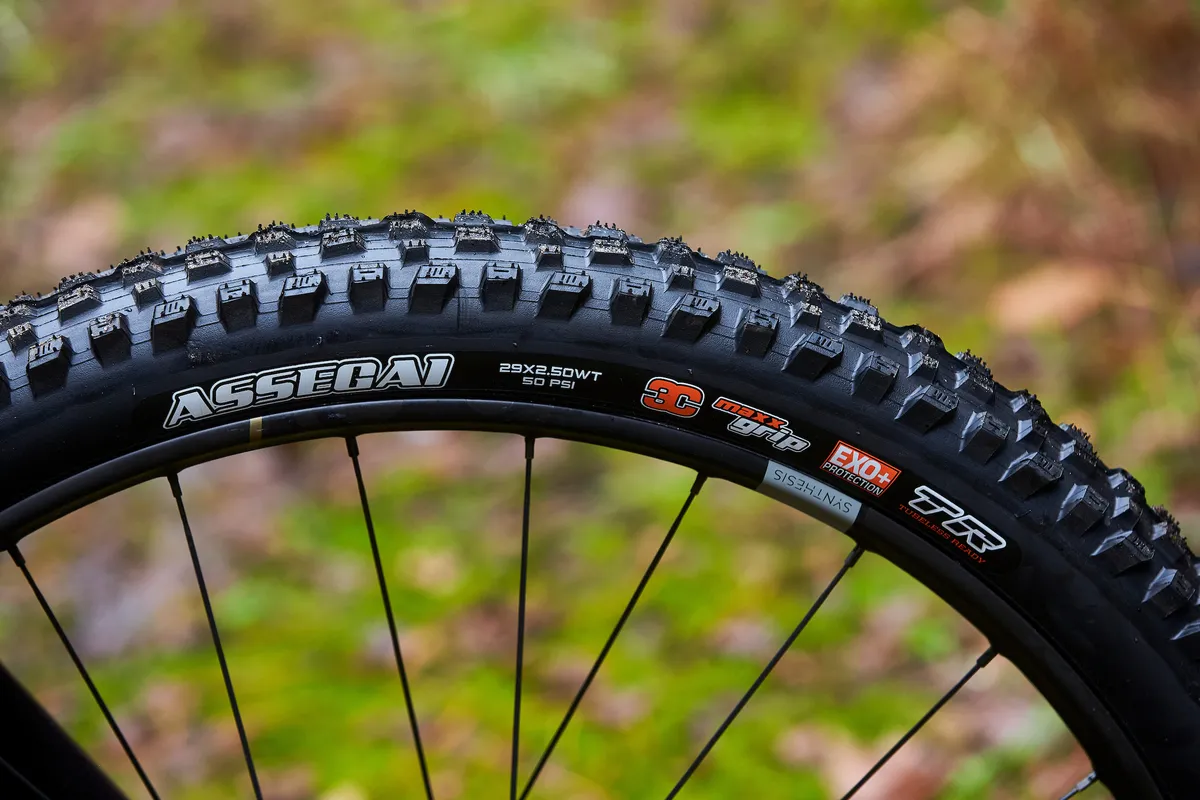
In this article, we will focus on mountain bike-specific carcasses, where there are typically more options available from the major brands.
Gravel tyres, road bike tyres and general-use bicycle tyres use the same principles of construction, but have different objectives (eg, low cost or all-out rolling performance) and there are fewer carcass types to choose from.
What is tyre carcass TPI?
A mountain bike tyre carcass consists of layers, starting with and always including a rubberised threaded material that forms the basis of all tyres – each layer that makes up the construction of the carcass is referred to as a ‘ply’ in tyre jargon.
A tyre’s carcass material is made from threads of varying thickness and quantity, usually 60 or 120 threads per inch (TPI), that are coated with rubber.
A lower TPI means thicker, stiffer, heavier threads, thus fewer per square inch. A higher TPI means thinner threads that will create a lighter, more flexible tyre with thinner sidewalls.
The thicker the threads, the more rubber is needed to fill the larger spaces between each one, as they can't be woven as tightly.
As a result, carcass construction can affect the weight, rolling resistance, damping, reliability and grip of a tyre.
Many mountain bike tyres use a single-ply or dual-ply 60 TPI casing material to create a well-supported, resilient tyre; others might use only a single layer (or ‘single ply’) of 120 TPI material for lighter weight and increased flexibility, which helps reduce rolling resistance on rough ground.
Puncture-resistant inserts or sidewall inserts aimed at providing extra support and stability may also be added as additional layers within a casing, but these vary from brand to brand.
Selecting the right tyre carcass is often about the riding discipline.
Downhill and cross-country riding, for example, place different demands on tyres: stable and sturdy for downhill bikes, light and fast-rolling for cross-country bikes.
It can also come down to the rider (heavier or more aggressive riders might favour stability over rolling resistance) and the terrain (an XC racer might not necessarily choose the lightest, fastest-rolling tyre if the terrain is rocky and likely to damage the tyre sidewall).
Generally speaking, there are four types of carcass construction, each outlined below.
The devil really is in the detail, though, as some tyre brands offer casings with the same name but in two different constructions (for example, 60 TPI and 120 TPI), which will have an impact on the tyre's performance and intended use.
Single-ply, high-TPI carcass
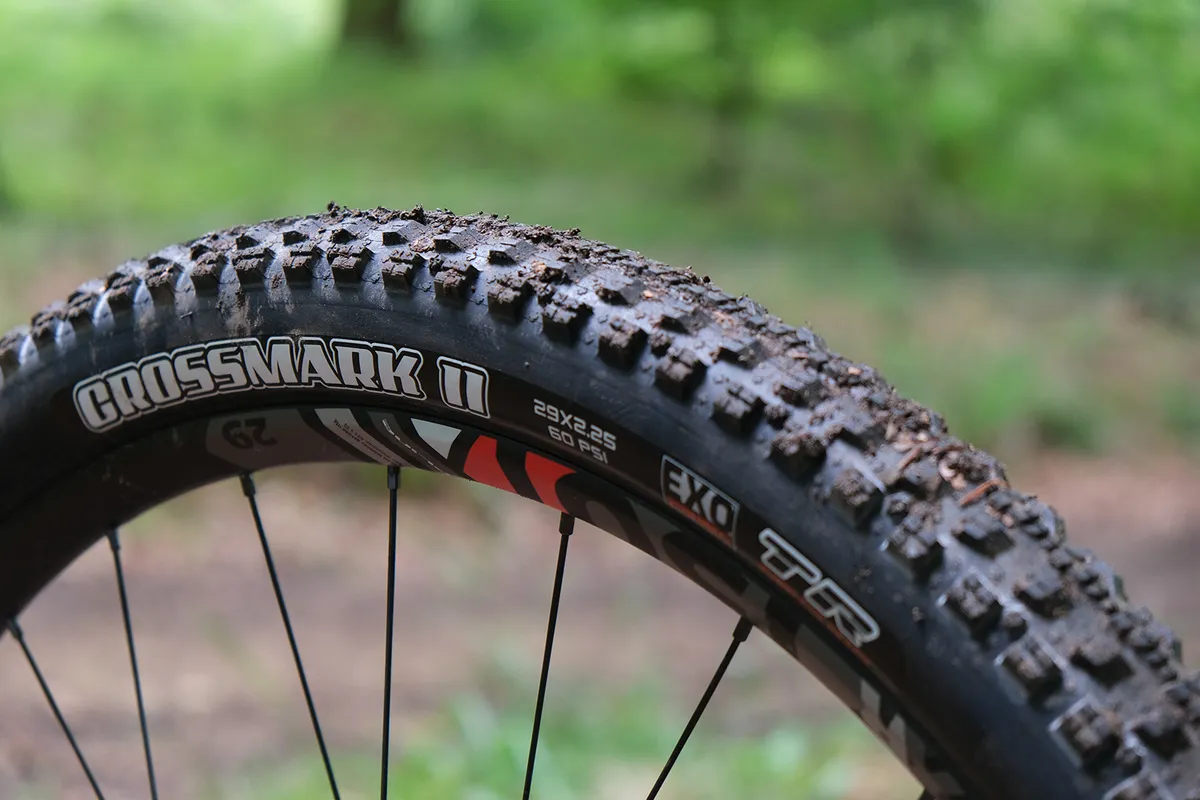
A 120 TPI single-ply tyre favours speed over durability.
The thinnest mountain bike tyre casings are built for XC-style riding and racing. The key objectives are low weight, fast acceleration and minimal rolling resistance, but they must also be able to cope with the varied terrain of modern XC courses without tearing or puncturing.
Tyres with a lightweight casing generally have a low-profile, fast-rolling tread pattern and are usually 2.4in and narrower in width.
The high thread count means less material overall, resulting in a lower overall tyre weight, which is vital for all-out acceleration, as we found when we tested the fastest tyre size for mountain biking.
Single-ply, low-TPI carcass
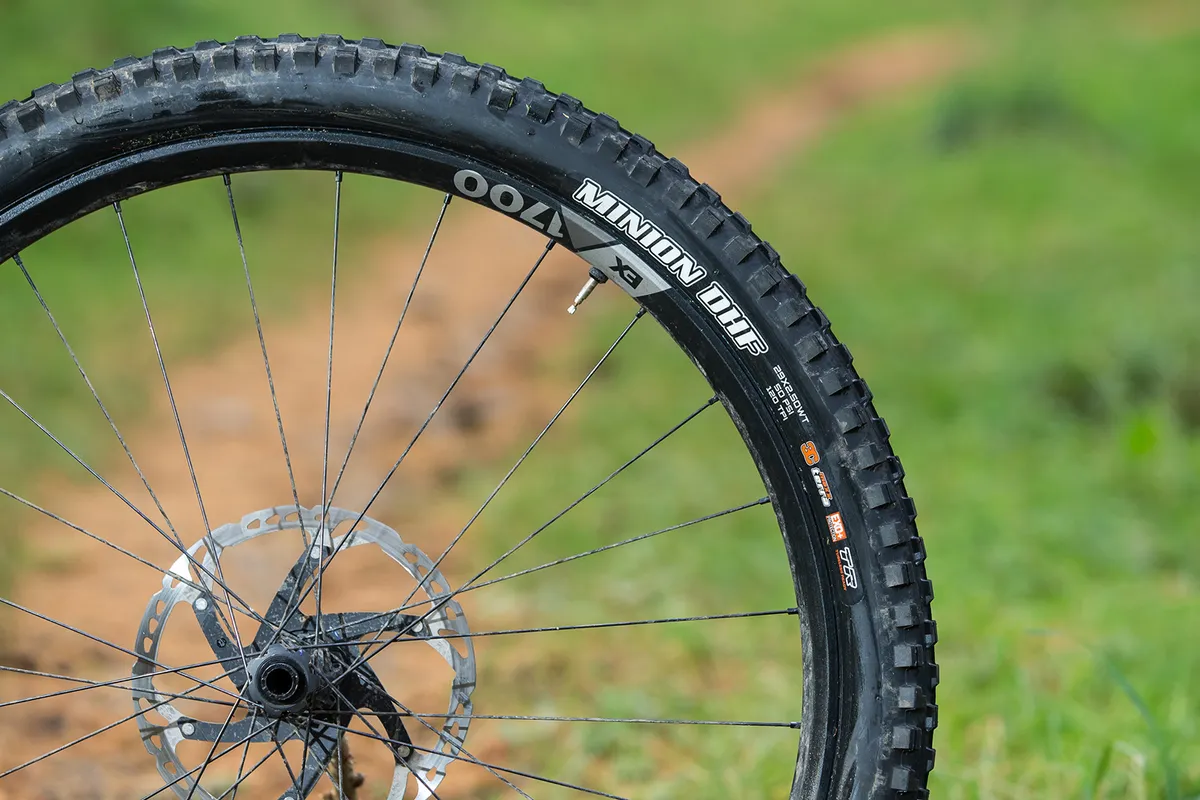
Most mountain bike tyres for everyday riding use a single-ply 60 TPI casing.
This will be slightly heavier than a high-TPI, single-ply tyre, but the thicker threads mean it should be stronger and sturdier without being overly heavy.
These characteristics make single-ply 60 TPI tyres common for everything from cross-country to trail, and downcountry to enduro.
Manufacturers often combine a single 60 TPI layer with a sidewall insert (Maxxis’ EXO and EXO or Schwalbe’s Apex, for example) for added structural support and resistance to sidewall cuts and pinch punctures. Companies also regularly include a puncture protection layer (or an optional one) in these single-ply tyres.
"The majority of our TCS Light [single-ply] mountain tyres feature SG2 technology, which provides a protective nylon insert spanning from bead-to-bead, to provide extra puncture protection without the weight of a dual-ply casing," says James Heaton from WTB.
Dual-ply, high-TPI carcass
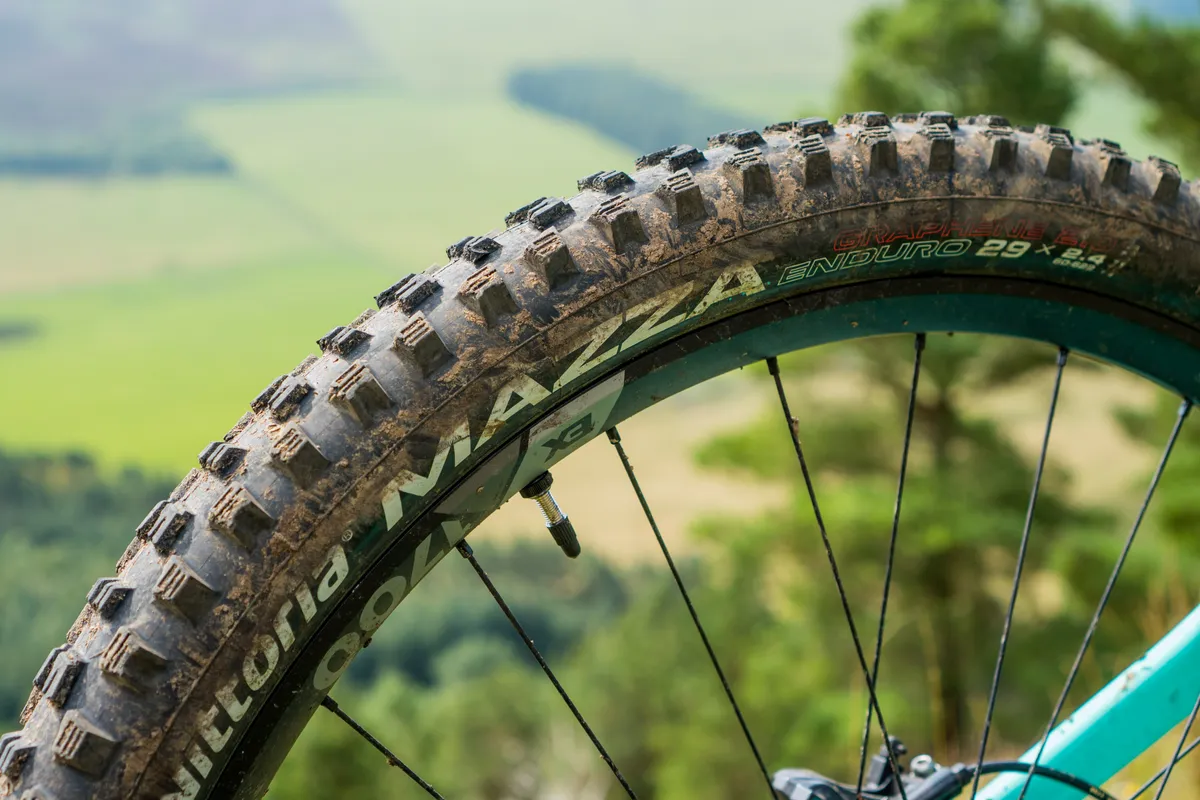
Some manufacturers offer dual-ply, 120 TPI tyres aimed mainly at aggressive trail riding or enduro racing.
The idea here is to provide support in the turns and against big hits, yet keep things fast and relatively lightweight (compared to a dual-ply, lower-TPI option).
Maxxis’ DoubleDown, Schwalbe’s Super Gravity and Vittoria’s Enduro casings are examples of dual-ply, high-TPI carcasses.
Dual-ply, low-TPI carcass
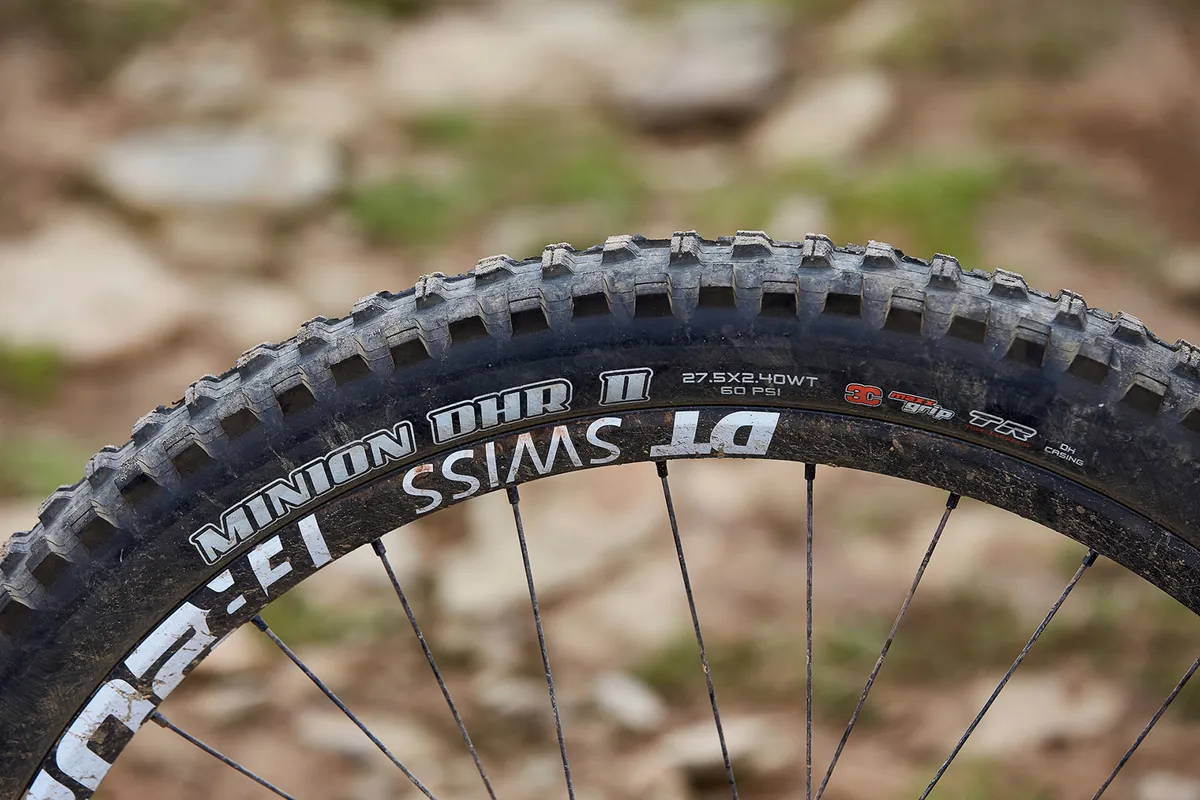
For gravity-fed riding, including bike park laps and downhill racing, you need a really sturdy tyre that can withstand the massive forces of ripping around banked turns and hitting rock gardens flat-out.
Tyres in this category normally use a dual-ply, 60 TPI casing and sometimes include a sidewall insert for increased strength.
The heavy-duty construction and increased volume of rubber means these beefy tyres are also better at damping out trail vibrations – they’ll bounce less over bumps and give a more planted ride.
Two layers of 60 TPI material is regarded as sufficient for slamming corners and smashing into rocks, while remaining manageable in terms of weight for gravity riding, where the focus is ultimately on going downhill, not climbing.
These tyres still add significant weight over other options, however, and are usually paired with a softer-compound rubber for the tread.
As a result, they roll significantly slower, but this isn’t a big problem when you are pointing straight down a hill.
Understanding layers and plies
When a tyre carcass is put together, each ply is folded around the tyre bead (the structural part that sits against the wheel’s rim) and back over itself. This stacking up usually means one ply becomes three layers in the middle of the tyre.
Most manufacturers list the number of plies (one or two), not the number of individual layers. However, some (including Schwalbe) list the number of carcass layers once each ply is folded, so it’s worth reading each brand’s casing information to fully understand the different approaches to ply and layer naming.
What tyre carcass do you need for your riding style?
Tyre manufacturers produce options for each of mountain biking’s disciplines, so whether you ride cross-country, downhill or any of the categories in-between (yes, downcountry, we're looking at you) someone has you covered.
Not every brand makes tyres suitable for every type of riding – all-out racing (whether that’s cross-country or downhill) is for a small part of the MTB demographic, after all – but for day-to-day riding, every major brand has several options.
Cross-country
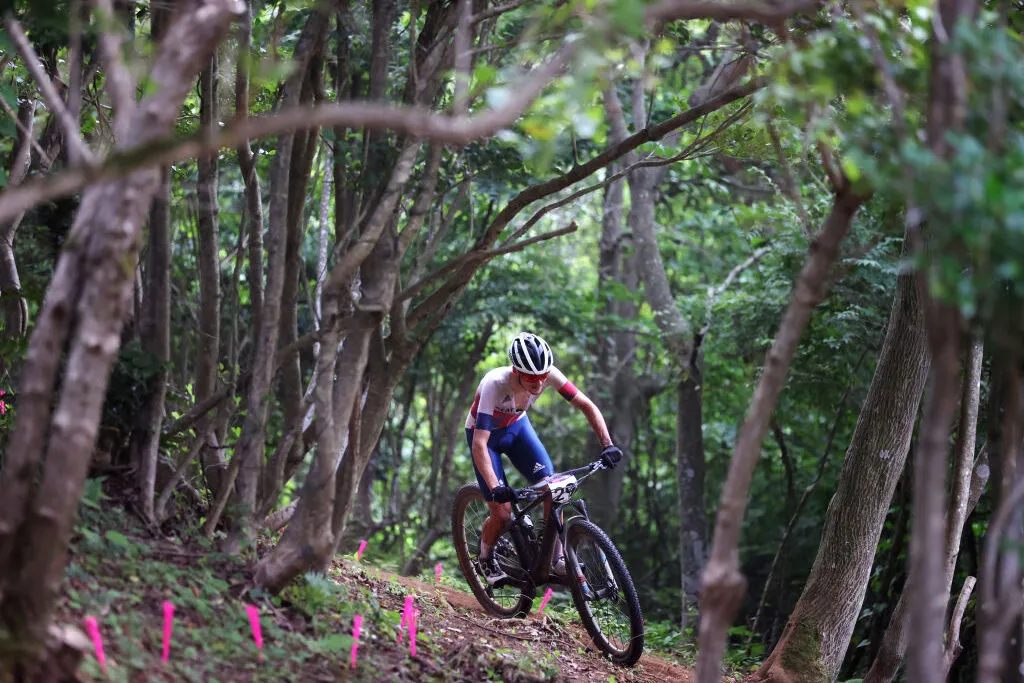
Cross-country mountain biking is generally considered as an all-out racing discipline comprising sprints, undulating terrain with punchy uphills, short but demanding descents, and a lot of pedalling.
As cross-country races and rides are fast-paced and focused on eking the most out of a trail, low rolling resistance is key.
A light, flexible tyre carcass is necessary to achieve this goal – to minimise weight at the extremity of the wheel and because a supple tyre typically rolls faster over rough ground. Hitting corners flat-out isn’t the priority here, so it doesn’t matter that sidewall support is compromised in order to keep the weight down.
We've already covered Maxxis' popular EXO 120 TPI casing, but Vittoria's XC-Race is another example.
"It's a 120 TPI, one-ply, tubeless-ready structure, with graphene compound," says Vittoria's Ken Avery. "It’s light and fast, but without being fragile.”
Schwalbe's Racing Ralph and WTB's TCS Light are other examples of XC-focused casings.
Examples of cross-country race tyres
- Maxxis Aspen (120 TPI EXO casing)
- Schwalbe Racing Ralph (Super Race casing)
- Vittoria Mezcal (XC-Race casing)
- WTB Ranger (TCS Light 120 TPI casing)
Downcountry and trail riding

Downcountry mountain biking can be loosely defined as ‘cross-country plus’ – taking lightweight bikes and thrashing them on trails a full-on race bike wouldn’t be suited to.
It's not dissimilar to trail riding, so while we're starting to see tyres designed with downcountry specifically in mind, including the Schwalbe Wicked Will and Vittoria Syerra, we'll cover both together here.
Higher speeds and technical features demand more of your tyres than cross-country riding, so stronger sidewalls provide added stability and better absorb the hits when hauling down rocky singletrack.
But the appeal of downcountry or trail riding is in the ease with which you can pedal along flat sections and up hills, so low weight and rolling resistance are still extremely important.
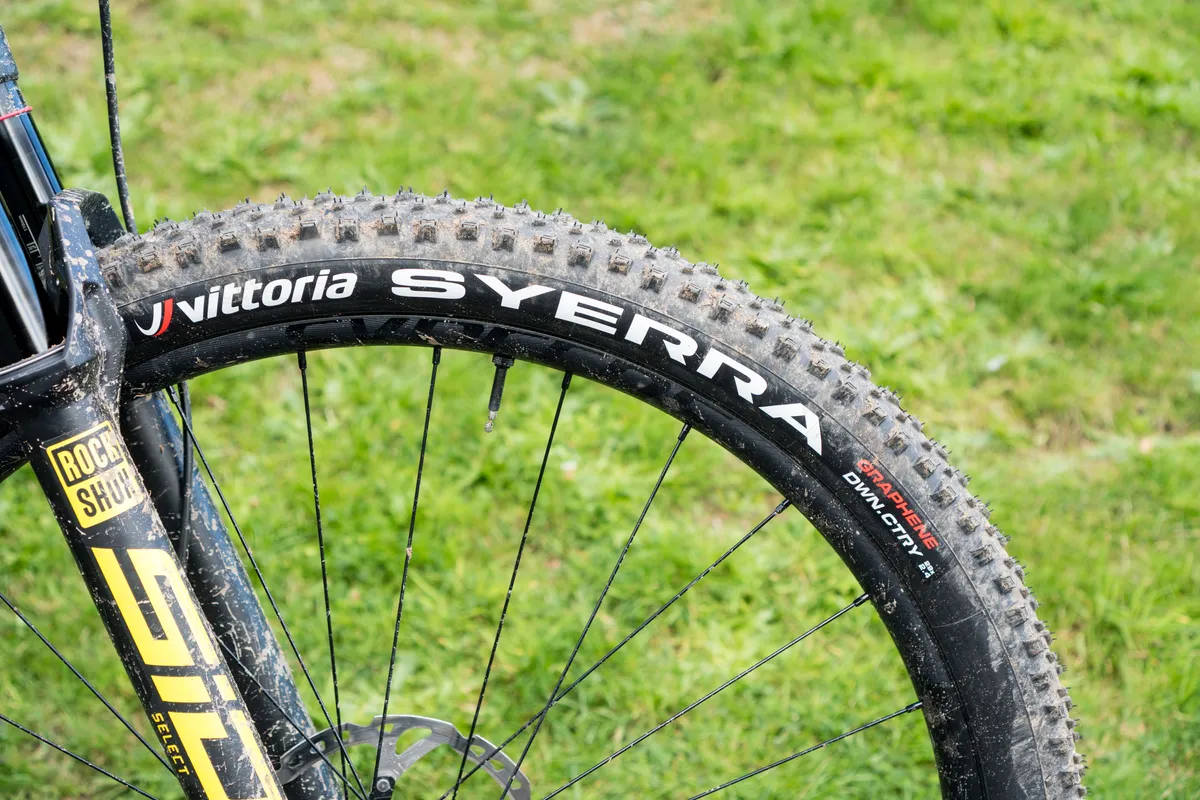
Downcountry or trail tyres typically use a single-ply, 60 TPI carcass, often with some extra support or puncture resistance built in.
Maxxis, for example, recommends its single-ply 60 TPI tyres with EXO sidewall protection for trail or downcountry riding. These tyres are different from Maxxis' 120 TPI EXO protection versions, identifiable by model designation printed on the sidewall.
"The 60 TPI casing on its own is considerably tougher than our 120 TPI casing, which means better durability and support while cornering," says Chamberlain. "EXO provides a little extra insurance on the sidewalls.”
Examples of downcountry and trail tyres
- Maxxis Ardent (60 TPI EXO casing)
- Schwalbe Wicked Will (Super Trail or Super Ground casing)
- Vittoria Syerra (Down-Country casing)
- WTB Trail Boss (TCS Light 60 TPI casing)
All-mountain riding

All-mountain sits somewhere between trail riding and enduro.
The focus is on clocking up the miles on rugged terrain, so covering ground is more important than smashing the downhills. Therefore, a tyre casing needs to be relatively light but able to withstand a lot of trail time and, in all likelihood, the many hits and grazes from pedalling over rocky ground.
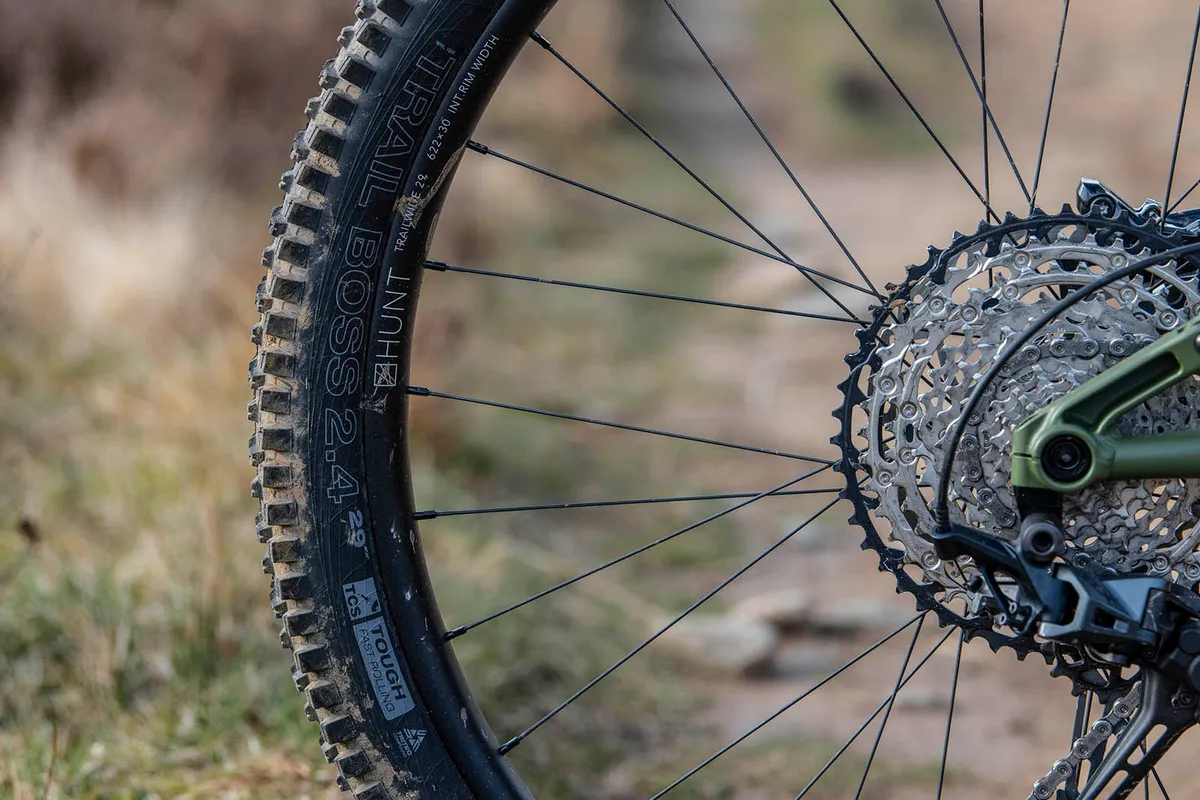
Some brands or riders might class trail and all-mountain riding as one and the same – Vittoria, for example, recommends its Trail casing for all-mountain riding. WTB says it often sees people choosing a TCS Light casing for the front wheel and a TCS Tough for the rear for a balance of both weight and durability.
Examples of all-mountain tyres
- Continental Trail King (ShieldWall casing)
- Maxxis Minion DHF (EXO 60TPI)
- Michelin Force AM2 Competition Line (Gravity Shield casing)
- WTB Trail Boss (TCS Tough casing)
Enduro riding

Enduro is a racing discipline where riders have to get to the top of the mountain in a set time (usually under their own steam) then race a series of mostly downhill stages against the clock, with the stage times added up to decide the race winner.
It involves long days in the saddle taking in every terrain imaginable – rocks, roots and jumps, with plenty of pedalling in between.
Basically, it’s what most people do on a mountain bike, which is why a large portion of the mountain biking public now count an enduro-derived bike as their daily ride.
In order to survive the rigours of modern riding, enduro mountain bike tyres need to be sturdy, abrasion-resistant, well-supported on the sidewalls, and they should damp vibrations.
Those are the priorities, but as do-it-all tyres, they should – ideally – also be easy enough to pedal around on. Not too much drag and not overly heavy, even if you'll lose some efficiency against faster tyres.
Some racers and heavier riders might use full-on downhill tyres on their enduro bikes, but most people are more comfortable on something robust but a little lighter, such as Schwalbe’s Super Gravity casing or Maxxis’ DoubleDown offering.
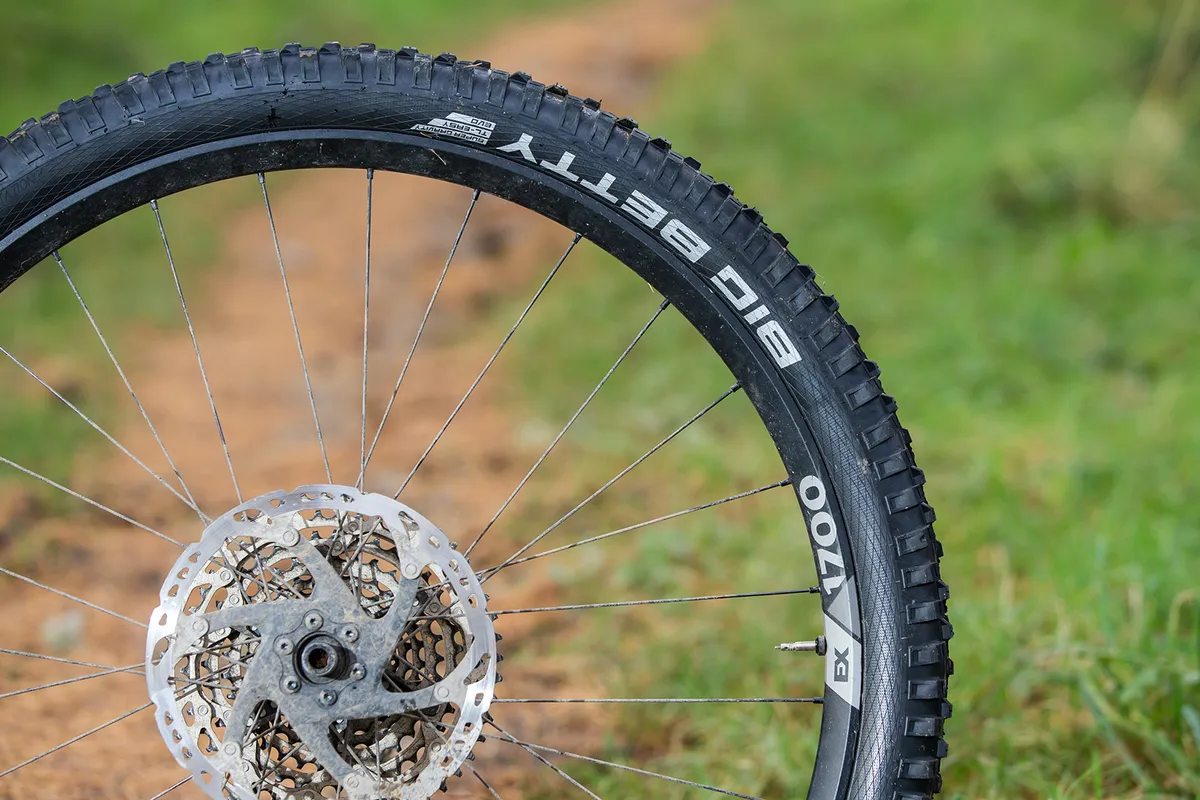
WTB, on the other hand, makes its TCS Tough tyre casing for more aggressive enduro-style riding.
“TCS Tough tyres feature a dual-ply casing, and while extra rubber means extra weight, it also means better defence against punctures and improved stability," says WTB's Heaton.
"The thicker sidewalls can withstand higher forces before they deform, so they provide great support when dealing with heavy corners and compressions.”
Examples of enduro tyres
- Hutchinson Griffus (66 TPI dual-ply Hardskin casing)
- Maxxis Minion DHR II (DoubleDown casing)
- Schwalbe Magic Mary (Super Gravity casing)
- WTB Judge (TCS Tough casing)
Downhill riding
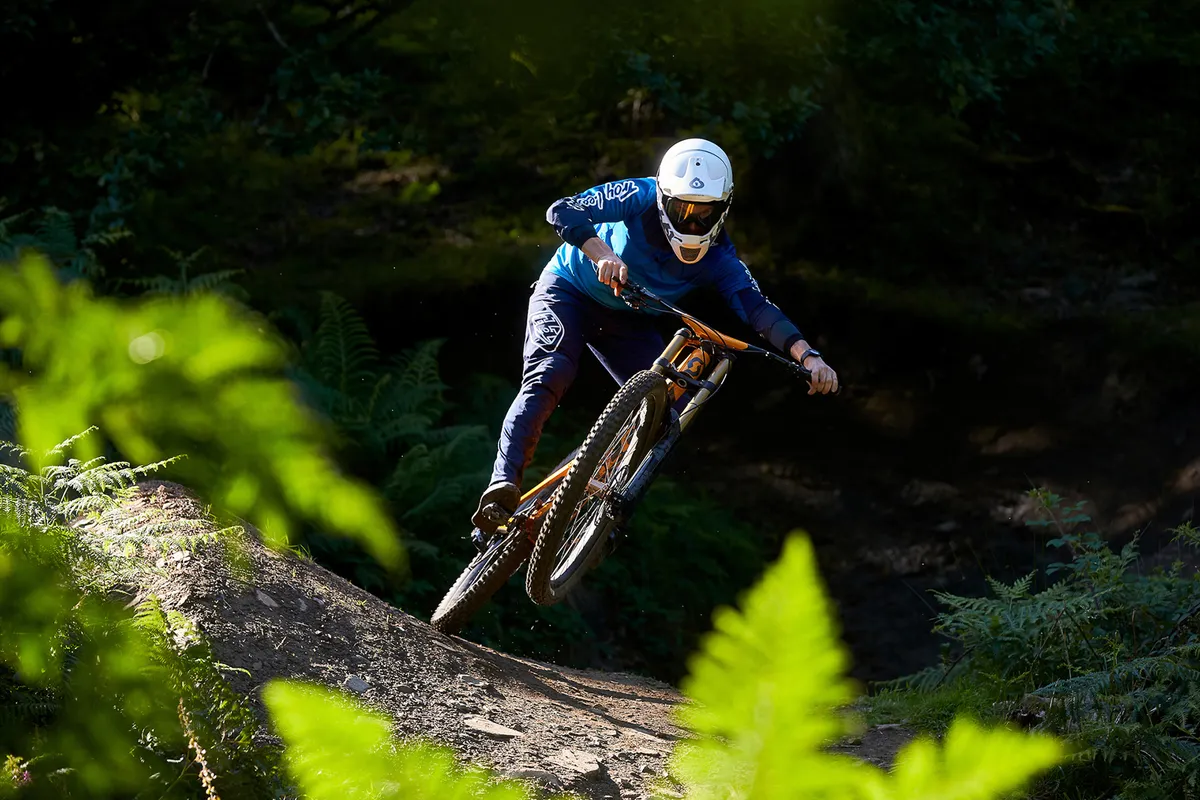
Downhill riding/racing and gravity-focused bike park laps really put a tyre carcass to the test.
High speeds over rough ground, extremely technical sections, G-forces around banked turns and heavy braking require the strongest casings, within reason – the bike still needs to remain a manageable weight, even if there is an uplift, without sacrificing the tyre’s practicality.
You might want to choose a downhill casing if most of your riding is at the bike park or pointing downhill, or if you are a heavier or faster rider and find your current tyres flex a lot in turns (which usually leads to the tyre’s bead breaking its airtight seal against the rim, burping air).
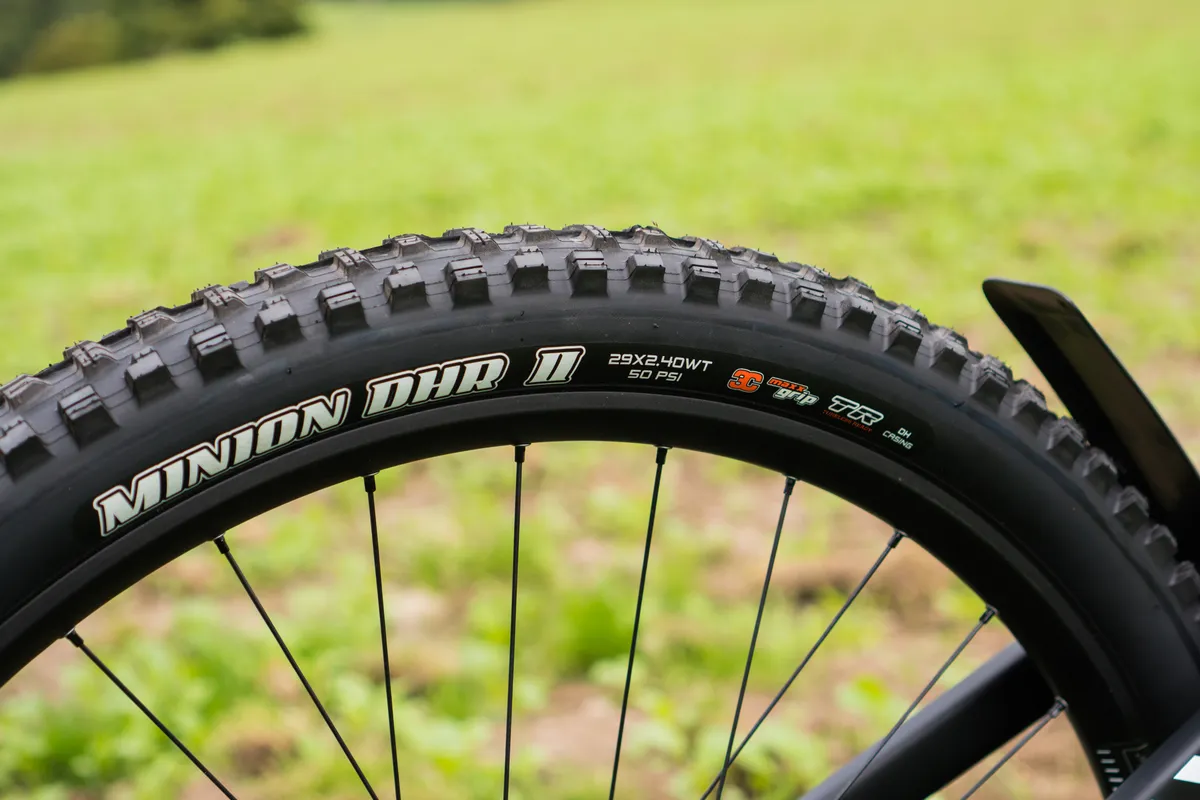
Not all brands offer an all-out downhill tyre casing. Like cross-country at the other end of the spectrum, it’s a smaller market, and making tyres is an expensive business.
Schwalbe, Maxxis, Continental, Vee, Bontrager and Specialized all make World Cup-proven downhill tyres with dependable, well-supported casings.
Examples of downhill tyres
- Bontrager G5 Team Issue (Dual-ply casing)
- Maxxis Assegai (Downhill casing)
- Schwalbe Magic Mary (Super Downhill casing)
- Vee Tire Snap WCE (Gravity Core casing)
What else is there to consider?
Front rear vs rear wheel
Generally speaking, the front wheel of a mountain bike supports less of a rider's weight compared to the rear. That means front-tyre pressures can be lower than the rear but also lighter, thinner-carcass tyres can be fitted.
Using a thinner-carcass front tyre saves overall weight but doesn't significantly impact puncture protection, and unless the rider is particularly hard or heavy shouldn't reduce cornering stability and control.

Logically, it follows a thicker-casing rear tyre should be fitted to the rear wheel. This provides increased puncture protection and the stiffer carcass reduces the chances of burping or the tyre squirming in corners.
Combining a thinner front tyre carcass with a thicker rear offers a good compromise between weight, puncture protection and stability, and you'll frequently see bikes factory-fitted with this configuration.
Examples of front and rear tyre-carcass combinations for each mountain bike discipline:
- Cross-country: Maxxis EXO casing 120 TPI front, Maxxis EXO casing 60 TPI rear
- Downcountry: Schwalbe Super Ground front, Schwalbe Super Trail rear
- Trail: Vittoria Trail [Tubeless TNT] front, Vittoria Enduro [Tubeless 2PLY] rear
- All-mountain: WTB TCS Light 60 TPI front, WTB TCS Tough 60 TPI rear
- Enduro: Maxxis EXO or DoubleDown front, Maxxis DoubleDown or DH Casing rear
- Downhill: VeeTire Enduro Core or Gravity Core front, VeeTire Gravity Core rear
Tyre pressure

Finding the right tyre pressure for your mountain bike is part art, part science.
That is to say, just like tyre carcasses, what pressures to run depends on the terrain, rider build (weight), wheel size, tyre width, rim width and construction, riding style and even the temperature. It’s a big topic that deserves some reading time, so we've got a separate, in-depth guide to mountain bike tyre pressures.
However, a tyre carcass can play its own role in selecting tyre pressures.
Lightweight, single-ply cross-country tyres deform around objects a lot more easily than heavier dual-ply downhill tyres.
You might think they’d therefore require higher pressures but, contrary to popular belief, cross-country racers often run surprisingly low pressures (sometimes as low as 15psi), for excellent grip on technical climbs, and because a supple tyre (achieved through the casing and pressure) rolls faster over rough ground.
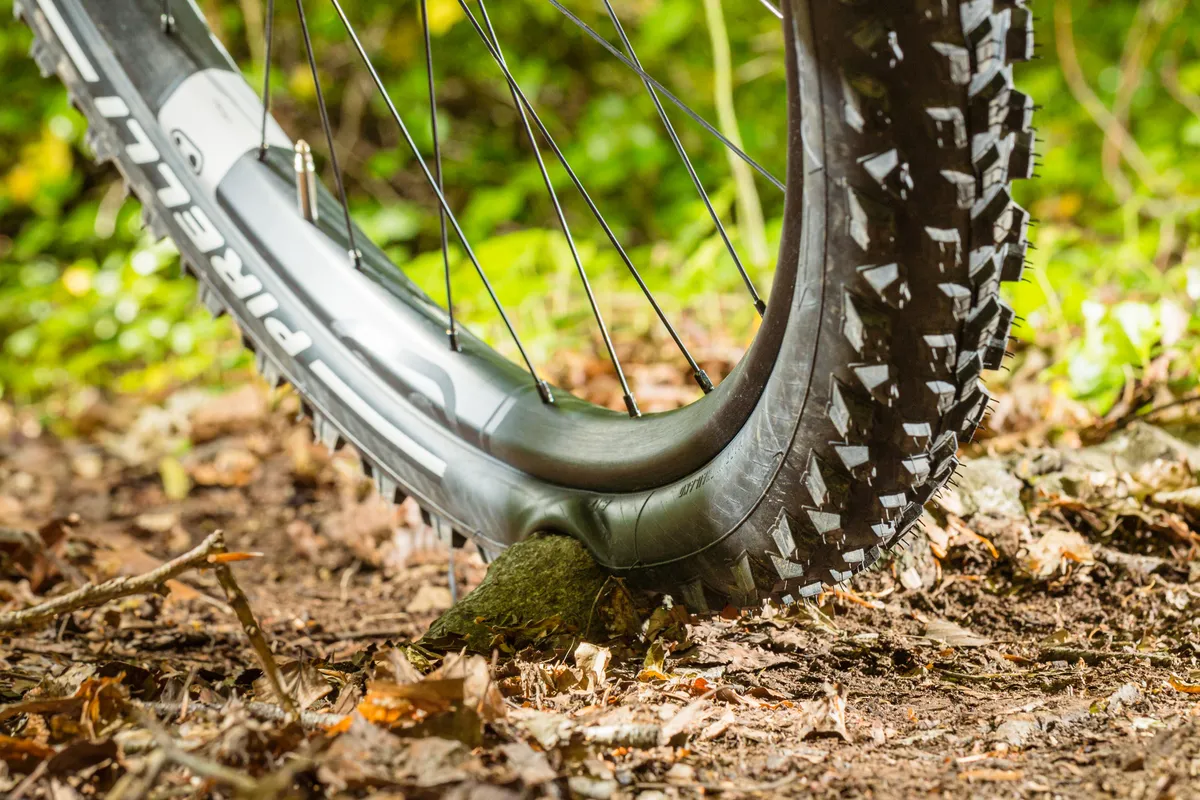
These lower pressures are usually accompanied with a tyre insert (more on these below) to help protect against punctures, and allow the competitor to carry on riding on a flat tyre, similar to automotive ‘run flat’ tyres.
Of course, there is always a limit as to how low or high you can run your tyre pressures, and you can bet that every World Cup cross-country racer has their own, top-secret pressure preference.
On the other hand, enduro or downhill tyres with a heavier casing and/or sidewall support (or puncture protection) layer might allow a heavier or faster rider to drop the pressures without risk of tearing the tyre off in every turn or smashing the rim into every rock.
What about tyre volume?

Tyre volume means the volume of air inside the tyre. Mountain bike tyre volume can be affected by a number of factors, including rim width and profile and tyre width – change either and the volume of the tyre changes too.
Although tyre volume and width and carcass thickness can be specified independently from one another, a larger-volume tyre requires more material for the same carcass thickness and can weigh significantly more than a lower-volume version with the same carcass construction.
The higher volume can contribute to flexier sidewalls, which might not suit heavier or harder riders. Those types of riders will want to investigate tougher-casing, high-volume tyres, but these come with a significant weight penalty.
In our tyre width test, wider options were faster nearly everywhere. Of course, there are other considerations than pure speed – for example, if you are riding very long routes or you sprint (accelerate) a lot on your rides, the extra weight of a bigger tyre might have more of an effect that it would for riders who grind up hills then rocket back down.
How does carcass thickness influence tread pattern?
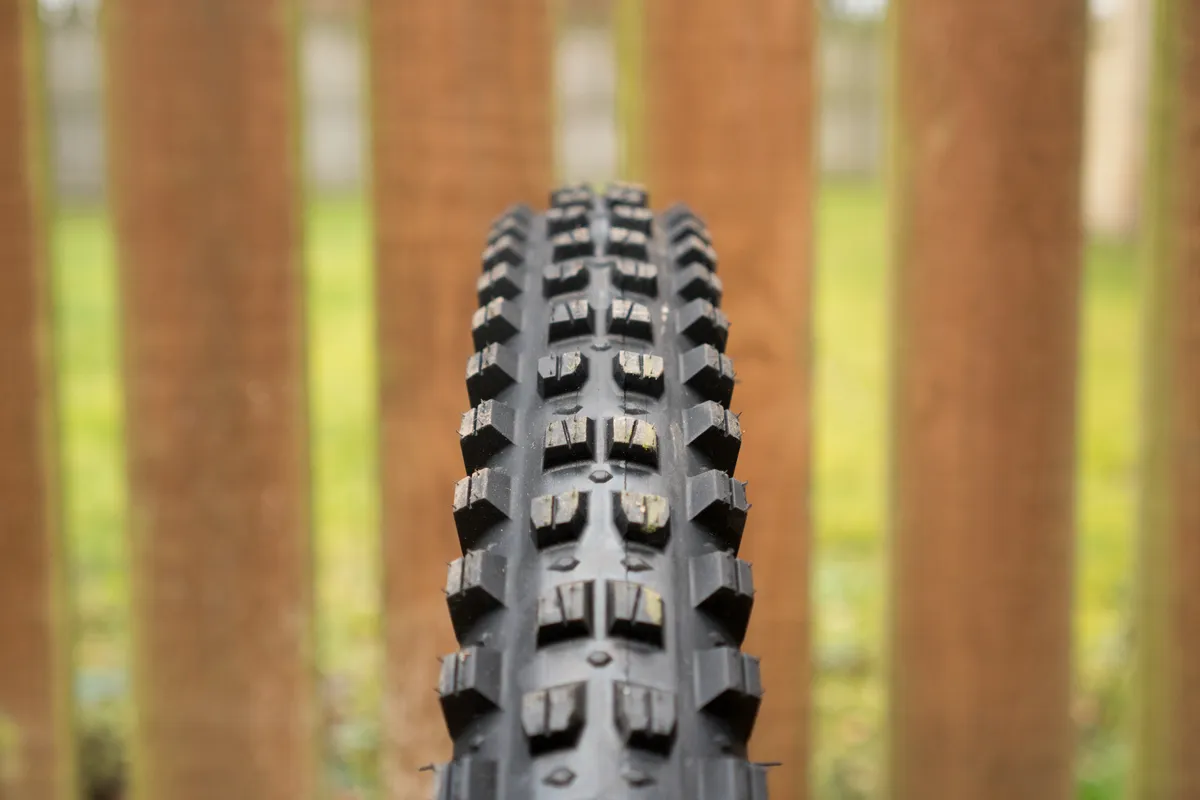
Mountain bike tyre tread patterns vary massively, with each one designed to suit certain conditions.
For example, there are low-profile patterns for faster rolling speed, chunky treads for ultimate grip and braking control, and widely spaced knob patterns to help shed mud and dirt on winter mountain bike tyres. You’ll find a tyre for pretty much any condition among most manufacturers’ catalogues.
In general, really lightweight (120 TPI, single-ply) tyres have less aggressive tread patterns because they are designed with rolling speed as a priority.
Tyres with the burliest two-ply casings usually have the most aggressive tread patterns to help search for grip in the gnarliest conditions.
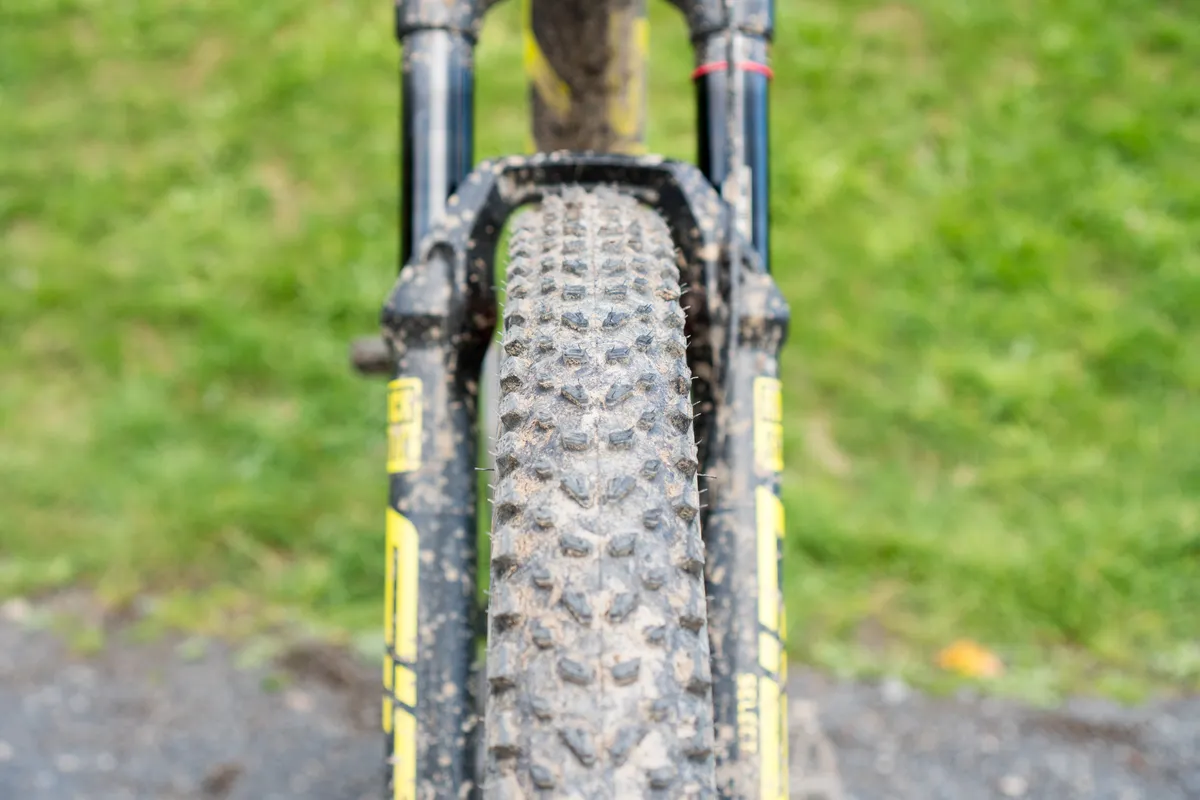
And between the two extremes, there is crossover.
Tyre models with specific tread patterns – whether that's Vittoria's Mazza, WTB's Verdict or a host of other tyres – are available in multiple casing types, where the tyre's tread pattern and the associated model name refers specifically to the type of terrain it's designed for, rather than the casing type it's constructed with.
For example, Maxxis offers its popular Assegai tyre, which was originally designed for downhill world champion Greg Minnaar and has an aggressive tread pattern, in its 60 TPI (single-ply), DoubleDown (120 TPI dual-ply) and Downhill (60 TPI dual-ply) casing options – for anything from trail riding to enduro and downhill use.
Does carcass type affect tyre compound?
In short, no.
Tyre carcass type won't normally affect the tyre compound used. Manufacturers are able to produce any casing type matched with any of their rubber compounds.
However, with the exception of fast cross-country race tyres, the cheapest-to-produce tyres, with the thinnest carcasses, are generally made with the least grippy rubber in a bid to reduce costs.
While branded, these tyres are typically fitted as original equipment to many bikes, especially cheaper mountain bikes. Depending on the terrain you ride, it could be worth upgrading your bike's stock tyres to rubber with a grippier compound to improve performance.
Compound has a significant influence on the performance of a mountain bike tyre, so matching up both carcass type and compound to your riding style and the terrain will play a big part in finding the right setup.
Softer compounds grip better on roots and rocks, and have a more planted feel, but wear faster and have more rolling resistance. A harder compound will be more durable but offer less grip.
Do tyre inserts affect carcass performance?

A tyre insert is an extra, separate buffer layer that sits inside the tyre. Its purpose is to provide a cushioned layer that sits on top of the rim, and to add to the structure of the tyre system.
When the tyre compresses from a heavy hit (into a square-edged rock, for example), the tyre insert can help protect the rim from damage and slow the impact – so it’s a way of further controlling the feel of a tyre and limiting punctures and rim dents or cracks.
In turns, the insert might also aid with supporting the tyre so there is less side-to-side flex.
It requires a bit of testing, but a tyre insert combined with a lighter carcass than you’d normally use might give your bike a more planted feel and protect your rims from damage without a great weight penalty.
However, inserts are famously difficult to install (CushCore has made a specific tyre lever to help) and not everyone enjoys the way they ride.
